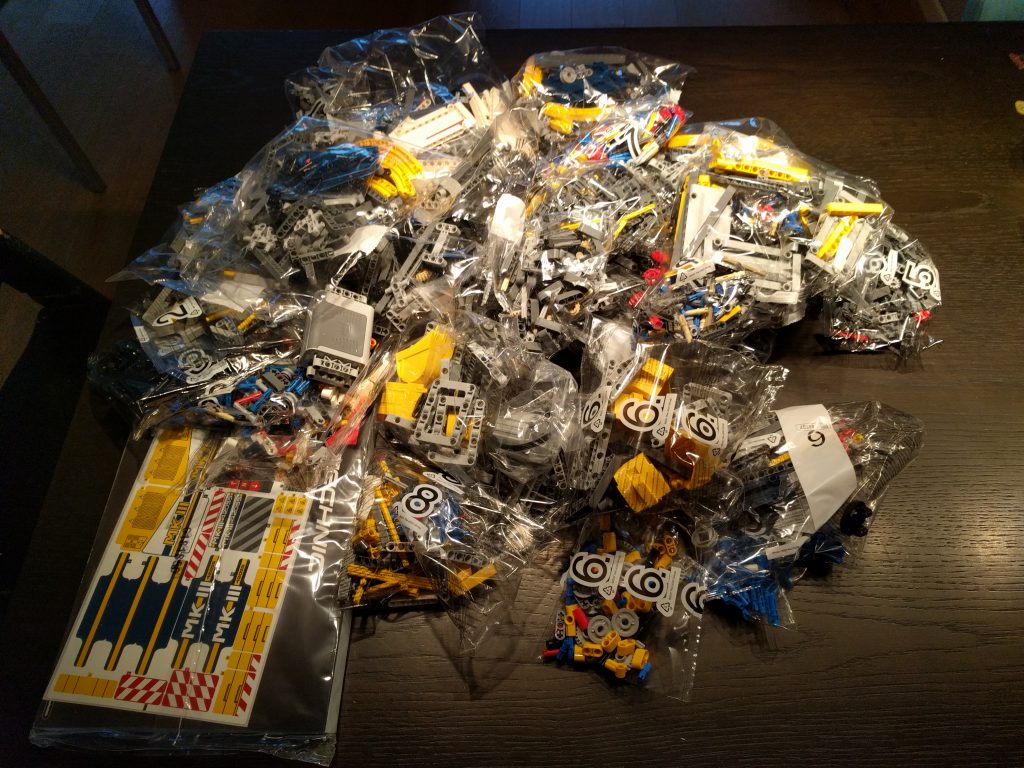While the price tag had long dissuaded me from getting a set for myself, Lego Mindstorms had been high on my wish list ever since I set eyes on the Dark Side Developer Kit a long time ago. So when my family got sick of my longing and indecision, they gave me the EV3 Home Edition set for my birthday a couple of years back. Wonderful stuff! But while it allows for some really impressive robots to be built, I found that the set provides limited options for inexperienced builders such as myself.
So when I received a gift certificate as a goodbye gift from my previous job, I expanded my toolbox with the largest Lego Technic set to date: the humongous Bucket Wheel Excavator. While it’s an impressive build, I especially appreciated the truckload of raw material. This would give me lots of options for building and experimentation.

Having quit my job, I had time to spend as well. So I set out to do what apparently lots of people do with their Mindstorms, which is to build an M&M sorting machine. And while many of these machines use non-Lego parts (especially to collect the sorted candy), I wanted mine to be all Lego. So after some time I came up with what I think is a pretty decent design.
Having put a lot of effort into the project, I wanted to preserve the design to be able to rebuild the model. So when I took the robot apart, I took photos every step of the way and used these (in reverse order) to create a model in Lego Digital Designer. Although modeling is a breeze in this piece of software, it produces building instructions that are many things:
- animated: the parts drop into their assigned positions, which is really cool, and
- automatically decomposed: the software decides for itself which parts constitute a sub-assembly, and
- hilarious: “have these six pegs float at these positions until you attach them to liftarms”, and
- unusable: “insert this piece into the center of the closed box you built over the last hour”, and
- unalterable: AFAIK the instruction generation process is fully automated and cannot be influenced by the user.
The LDraw standard and associated software served me better. Its support for sub-assemblies makes modeling more manageable, makes large models easier to understand, and chunks the build instructions into separate sequences. I ended up using LDCad for modeling, and LPub3d to convert those models to building instructions. And with the addition of lots of LDraw source editing, I brought the results to the point where they are today.
Hoping that it might spark joy in others, I prepared my work for mass consumption, which included naming it. I settled on “klust3r” because
- it adheres to the apparent convention of 1337ly replacing an ‘e’ by a ‘3’ in EV3 robot names, and
- it evokes associations with the concept of categorization, and
- it plays on the Dutch half-sentence “ik lust er” (roughly meaning “I’d like some”), which seems appropriate, and
- it allows for trademarking because it’s not an existing word.
But because of the possible association with the English “lackluster”, the robot may suffer a name change at some point in the future.